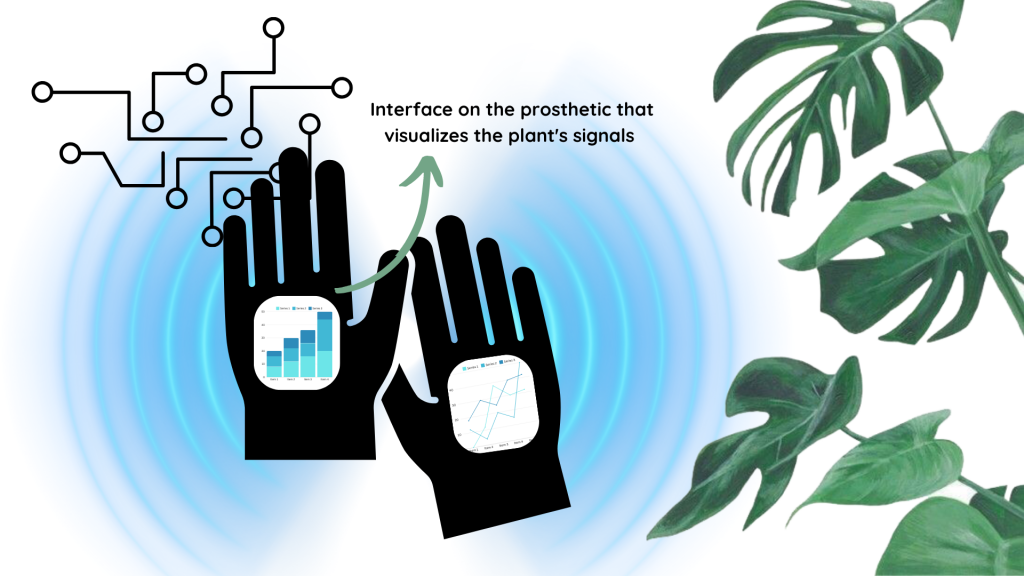In this speculative design project, I set out to create a prosthetic that enables humans to sense and communicate with a non-human system—in this case, plants. This prosthetic would allow users to perceive and interact with the subtle signals that plants emit, such as changes in moisture, chemical signals, and electrical impulses.

Role of Networks: The internet plays a crucial role in this project as it provides a platform for data collection, sharing, and real-time interaction. By connecting the prosthetic to a network, users can access a broader database of plant signals and environmental conditions, enhancing their understanding and interaction with the plant world.
Presence of Data/Bot: The data collected by the prosthetic lives on a cloud-based platform, accessible through the internet. This ensures that the information is readily available for analysis, sharing, and collaborative research, enabling a community of users to contribute and benefit from the collective knowledge.
Computational Languages: Computational languages and protocols are shaped by networks through the need for interoperability and real-time data processing. In this project, programming languages like Python and frameworks like TensorFlow can be used to interpret the plant signals and translate them into human-readable formats, facilitated by networked communication.
Communities and Networks: This project relates to various communities, including environmental scientists, biohackers, and enthusiasts of speculative design. Online forums, social media platforms, and dedicated websites can serve as hubs for these communities to share experiences, troubleshoot issues, and collaborate on further developments.
To present this project, I envision creating an online platform where users can upload data from their prosthetics, visualize plant signals, and engage in discussions about their findings. This intervention in the network would highlight both technical and social aspects:
- Technical Aspects: The platform would feature real-time data visualization, AI-driven insights, and a repository of plant signal data accessible to all users.
- Social Aspects: It would foster a community of like-minded individuals who are passionate about exploring and understanding the non-human world, encouraging collaborative research and shared learning.
This project not only showcases the integration of speculative design with networked technologies but also emphasizes the potential for creating new forms of interaction and understanding between humans and the natural environment.